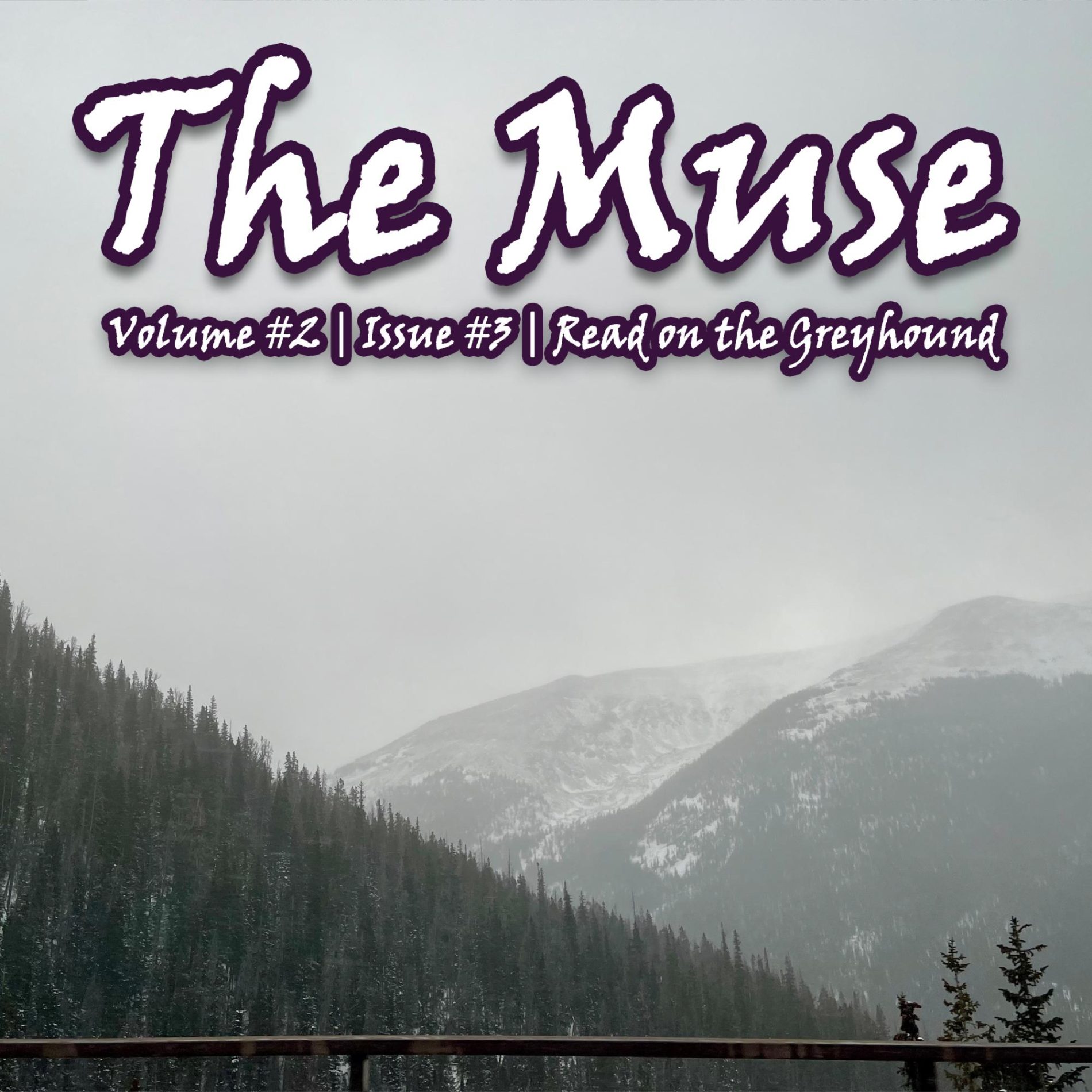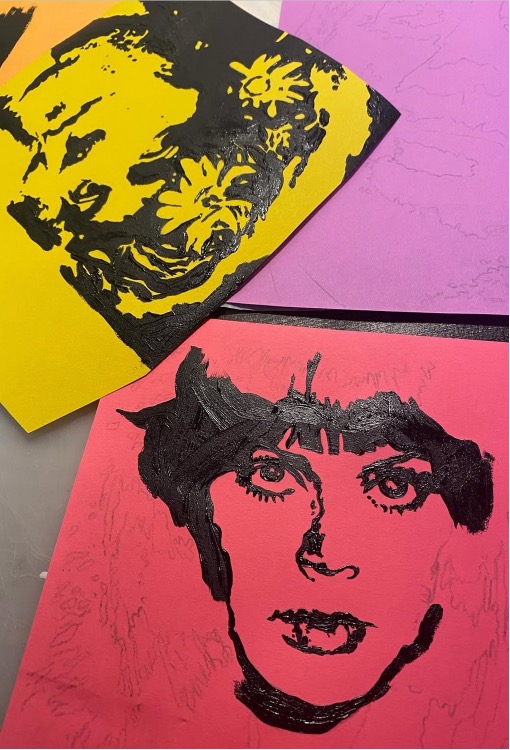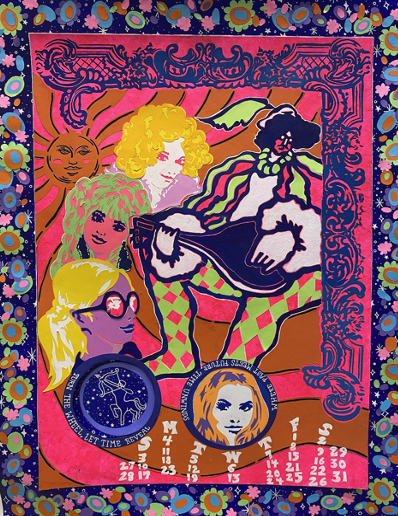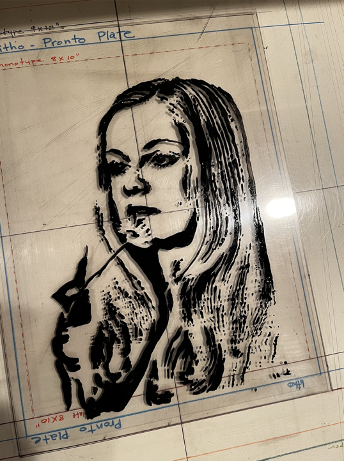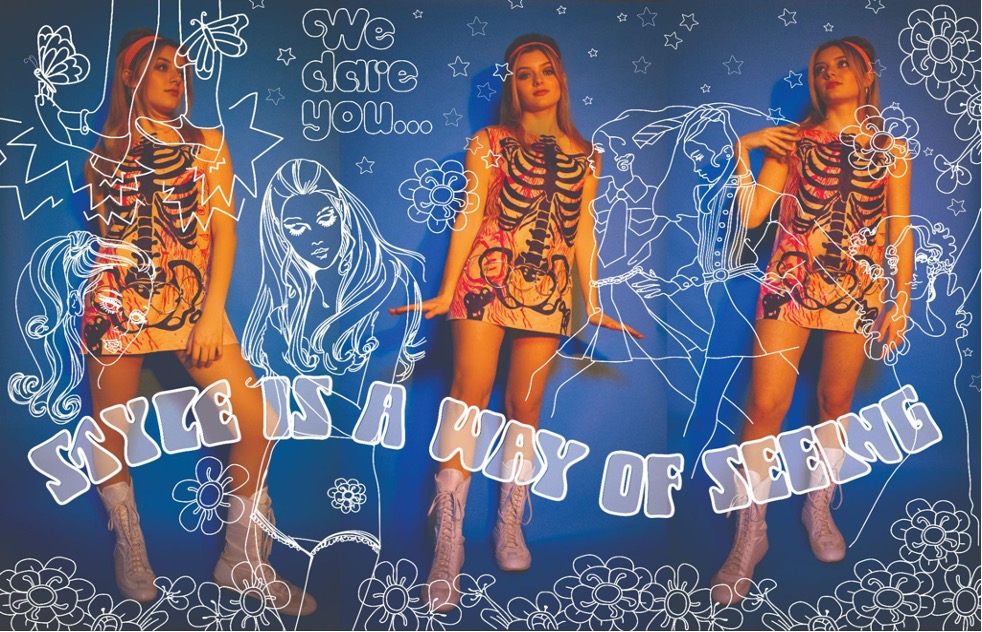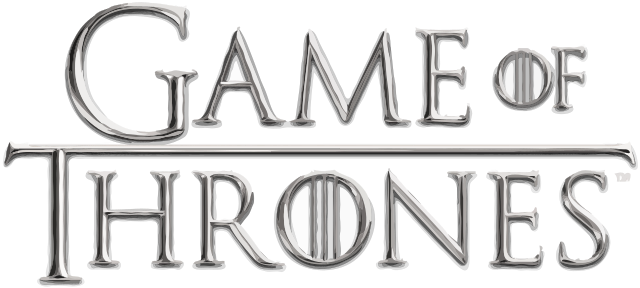
Since the release of “Cyberpunk 2077” in December of 2020, the world has, once again, become fascinated by this unique sub-genre of speculative fiction. However, cyberpunk is far from the only sub-genre of its kind. Moreover, I will explore three such sub-genres which combine the social critiques of the punk movement and the fantastical ideas of speculative fiction to create a unique blend of past and present, reality and fantasy.
In order to understand these sub-genres, which span literature, film, and even music, we have to begin at the one that started it all – cyberpunk. Coined in 1982 by author Bruce Bethke, the term cyberpunk is defined by Merriam-Webster as science fiction dealing with future urban societies dominated by computer technology. Despite being accurate, this definition lacks one key element that puts the punk in cyberpunk: the rejection of social norms. Punk in general began as a music-based alternative subculture in Britain in the mid-1970’s. The economic stagnation and political disillusionment of the 70’s caused young people all over the world to seek a means of expressing their frustration over a seemingly hopeless world. Cyberpunk put a new spin on the timeless ideas popularized by the punk movement. Instead of creating media directly criticizing contemporary socio-political issues, cyberpunk leaps into the far future to examine how social injustices may be augmented by advanced technology.
Cyberpunk began in literature with genre-defining works by Neal Stephenson, William Gibson, and Richard Morgan. In the ensuing decades, cyberpunk stories and themes have been adapted to screen with classics like “Blade Runner”, and more recent films such as “Junk Head.” It has even made its mark in various interactive media with table top gaming systems like Shadowrun and smash hit video games like “Deus Ex.” These books, movies, and games take the fundamental tenets of cyberpunk-low life and high tech and use it to inform their world building, narratives, and the larger questions they pose to the audience.
Cyberpunk is heavily influenced by the advancement of technology and the societal questions those advancements raise. As new technologies began in the late 20th and early 21st centuries, a unique sub-genre rose parallel to cyberpunk called biopunk or ribofunk. This genre bears many similarities to cyberpunk; however, it focuses specifically on the potential of genetic engineering. While cyberpunk imagines a future shaped by omnipresent digital technology and solarpunk explores the revolutionary possibility of clean energy, biopunk takes a different approach to the application of punk ideals to science fiction. It narrows in on a more specific field of scientific advancement and delves deeper into the transhumanist themes that cyberpunk often touches on. While there is often a lot of crossover in media between biopunk and cyberpunk, there are several examples of distinctly biopunk works. Books such as “The Island of Doctor Moreau,” anime like “Neon Genesis Evangelion,” and the groundbreaking video game “Bioshock” all grapple with questions about the consequences of bioengineering.
When it comes to aesthetics, meanwhile, there is a similar degree of cross-over between biopunk and cyberpunk. However, biopunk contains several notable elements. Body horror is a common motif and thematic tool in works of biopunk, although there are far less horrifying sides to biopunk which imagine sentient spacecrafts and organic buildings. Like its forebear, biopunk exists to subvert societal norms and force conversations about the ethical implications of scientific advancement.
Second only to cyberpunk in terms of recognition is steampunk. In direct contrast to cyberpunk, which seeks to examine our possible future, steampunk looks to the past in order to explore a history that never was. Set during the 19th century, steampunk media can cover a wide range of settings from the American West to Qing-era China, though its most common setting is Victorian England. This hyperfixation on imperial British settings as well as the aestheticization of the sub-genre as a whole has caused some to claim that steampunk no longer lives up to the punk suffix. This criticism is entirely valid, however, some works of steampunk media give an inkling of what it could achieve if reconnected with its anti-authoritarian roots. Books such as “20,000 Leagues Under the Sea” and “The Golden Compass” follow atypical protagonists who defy social conventions. Moreover, the steampunk community itself has a deeply ingrained “do-it-yourself” attitude which encourages individual expression and shuns capitalistic mass production. Regardless of whether it is deserving of the punk suffix, the steampunk genre added a historical element to the crop of genres blooming in the wake of cyberpunk.
The limitless possibilities of retro-futurism opened the floodgates to countless possible offshoots from cyberpunk. Some fell into the trap of aestheticization while others delved deeply into the age they sought to reimagine. Atompunk is a fantastic example of the latter. Like steampunk, atompunk imagines a future built on the advancement of one particular type of technology. Drawing on the ideas and stylings of the 1950’s and 1960’s, this sub-genre imagines a future powered by atomic energy. With that comes all the latent fears and ambitions of the Cold War era, specifically in America. Just as steampunk leans heavily into British themes and aesthetics, so too does atompunk lean into American aesthetics. However, unlike its optimistic counterpart Raygun Gothic, the atompunk genre does not seek to celebrate traditional American values, instead satirizing and criticizing them. The most well-known example of atompunk to date is the “Fallout” video game franchise which follows the player character through the nuclear wasteland of what was once the loud-and-proud America. However, there are several other pieces of media worth looking at if you are interested in the sub-genre. The works of Philip K. Dick such as “Solar Lottery” and “The Golden Man” reflect the questions America and the world at large struggled with during the period in which they were written.
I hope this brief overview of the development of cyberpunk and its associated sub-genres has, at the very least, given you some books to read and movies to watch. However, if I could impart one deeper message, it would be to remember that fantasy has always been and will always be a means of interpreting reality. These sub-genres were formed in direct reaction to changes in our society and should be read with that in mind. So long as there is culture, there will always be counterculture and in that way, punk will never die.
I’ve been exposed to films, music, and media from the 1960’s and 1970’s my whole life, and it’s clear that art has always shaped pop culture, from fine arts all the way to fashion. These two decades, in particular, inspired countless artists and designers, leaving a lasting legacy that continues to influence modern creative works. The dramatic shifts in politics, culture, and society during this time sparked bold new movements in art, music, and style. As an artist based in Brooklyn and Baltimore, I draw on that rich history to create my own work today.
The 1960’s and 1970’s were a time of experimentation and expression. They produced some of the most iconic artistic styles that still resonate today. From the sleek, clean lines of the early 60’s to the free-spirited, psychedelic vibes of the late 60’s and 70’s, these decades can teach us that style is more than just fashion – it is a way of seeing the world. The media of the time played a huge part in shaping these movements, from films like “Gidget” to “Breakfast at Tiffany’s,” “West Side Story,” and “Blow-Up.” Iconic music from The Beach Boys, The Drifters, The Monkees, and Jimi Hendrix also shaped the creative atmosphere, inspiring everything from fashion to album art to movie posters.
The Kennedy Era: Clean-Cut to Chaos
Let’s start with the early 1960’s, which I like to call the Kennedy Era. This period was marked by a sense of optimism and structure, think the American Dream, with its clean-cut fashion and a belief that anything was possible. Everything from the crisp suits to the post-war family ideal felt tightly controlled, as though society was still holding onto the last remnants of the 1950’s. But that all came to a screeching halt after the assassination of John F. Kennedy. His death shook America’s foundation, and with it came the realization that the perfect, polished image of the previous decade was gone.
This upheaval gave rise to movements like the mod style – think of The Beatles and the sharp, colorful clothing that defined the fashion of the time. The sleek, geometric patterns and graphic elements in design mirrored the cool, organized vibes of this era. This era introduced a more experimental approach to art and design, which found its way into movie posters, record covers, and advertisements. One can spot these influences in my artwork, which celebrates and repurposes these artistic elements that perfectly encapsulated the modernist optimism and restrained yet glamorous lifestyle of the early 1960’s. This was a break from the conformist ideals of the past, and I find myself influenced by this rebellious spirit when I look at how I capture the world through my art. My portraits, inspired by the fashion and icons of this period, reflect that sense of breaking free. I mix the bold silhouettes of the 60’s with an expression of personal identity, much like how the Mod Movement did with fashion.
The 60’s were a time of reinvention, not just in fashion, but in the way we thought about art and self-expression. It’s a theme that resonates with me when I look back at my own work. I’ve often thought of my pieces as reinterpretations, not just recreations of the past, but rather fresh perspectives on familiar icons and styles. When I work with vintage-inspired elements, like the strong geometric shapes of the Mod Era, I’m not just nodding to the past – I’m pushing its boundaries into today’s visual language.
The Boho Revolution and the Hippie Movement: A Cosmic Shift
By the late 60’s and into the 70’s, the world began to shift again. The optimism of the Kennedy years gave way to something entirely different, the Boho and Hippie Movements. This was a time defined by a sense of freedom and a rejection of traditional values. People wore bell-bottom jeans, floral prints, and fringed jackets. It was a celebration of individuality and self-expression, the opposite of the clean, organized world of the early 60’s.
This was also a time when the lines between fashion, art, and music became increasingly blurred. Music icons like The Mamas and Papas and Jimi Hendrix wore the fashion of the day, and artists began to experiment with psychedelic patterns, bright colors, and abstract shapes that reflected the freedom and creativity of the era. This blending of art, music, and culture was a powerful influence on the visual art of the time, and I draw from this fusion when creating my own pieces. One example is how I’ve reimagined figures like
Paul Anka, James Dean, or John Travolta in my artwork. These individuals were icons of the era, embodying the spirit of the time. I don’t just recreate them as they were; I take the best, most flattering elements of their features and transform them. This is where I blend the spirit of the 60’s and 70’s with the modern world, much like how the Boho Movement mixed vintage and eclectic styles to create something entirely new.
The artistic influences of the time, with their bold patterns and psychedelic motifs, are a key part of my own work. The font choices and design elements from movies like “Valley of the Dolls” and “Loving Spoonful” are like a visual palette I draw from when creating my pieces. I love experimenting with these types of fonts, patterns, and color schemes, which represent the playful, vibrant energy of the era. The 1960’s and 1970’s were defined by movement, experimentation, and an openness to new ideas, and it’s that energy that I try to channel through my work today.
The 1970’s: A New Chapter (And George Lucas Nails It)
The 1970’s were a time of experimentation on a much larger scale. The free love of the 60’s might have mellowed a bit, but in its place came the disco ball, platform shoes, and shiny fabrics. The 70’s were about embracing individuality, but in a much more celebratory, over-the-top way. People were embracing excess, both in fashion and lifestyle. And this era introduced the world to a new kind of style, a fusion of glamour and rebellion, of luxury and freedom.
Interestingly, the 1973 film “American Graffiti” directed by George Lucas captures the essence of the 1960’s even though it was made in the 70’s. Set in 1963, the film manages to capture not just the look of the time through cars, music, and fashion, but the attitude as well. It’s a fascinating reflection on how the past, just a few years removed from the present, can still feel so distant. The film shows us that while styles change, the spirit of a decade endures. Just as Lucas captured 1963 with a certain nostalgia, I often think about how I’m capturing a vision of the 60’s and 70’s that never fully existed, blending iconic figures and styles into an alternate reality.
Films like “Taxi Driver,” “A Clockwork Orange,” and “Grease,” the 1970’s take on the 1950’s, provide more opportunities to explore artistic and cultural shifts. The contrasting vibes of glamour in “Grease” and gritty realism in “Taxi Driver” show how the 70’s were a time of both reinvention and self-exploration, where old styles were reinterpreted and transformed to create something completely new. This blending of decades and genres feels especially relevant to my own creative process.
Mixing Decades: The Timeless Spirit of Reimagined Styles
One of the things I love most about these two decades is how their styles crossed paths, blending and morphing into something entirely new. The 1960’s had that clean, sharp silhouette, while the 70’s introduced a more carefree, bohemian approach. What’s truly fascinating is how, even today, these styles continue to influence one another.
In my work, I mix elements from both decades, whether it’s through the sleek lines of mod fashion or the boho patterns of the Hippie Era. It’s not just about pulling from the past – it’s about reinterpreting the spirit of these decades in a way that speaks to today. It’s about capturing the feeling of these eras, not just the look. Whether through “Valerie and Her Week of Wonders” exploration of modern art or the vivid colors and fonts of “Blow-Up,” I infuse my own work with the same mix of nostalgia and innovation. My portraits, often featuring iconic faces like Sharon Tate, Ann Margret, and Patti Boyd, are inspired by these past styles, but are reimagined with a modern twist. These are figures that never existed, created from the most iconic features of the past but with a fresh perspective. This blending of the old and the new allows me to capture the enduring spirit of the time while still pushing forward into new territory.
Final Thoughts: “Style is a Way of Seeing”
As I continue to work on pieces like my 60’s/70’s-inspired artwork, I’m always reminded of a slogan that resonates deeply with me: “style is a way of seeing.” This idea is central to my artistic process. Style is not just about what we wear or how we decorate our spaces – it’s about how we perceive the world and reflect it back. It’s about taking what’s already out there and making it personal, making it yours.
In my own art, I’ve tried to take the spirit of the 1960’s and 1970’s, these decades of transformation, and reinterpret them in ways that are both nostalgic and forward-thinking. By blending their iconic elements with my own vision, I’m able to capture a time that never really existed but always will. Whether through vintage record covers, psychedelic fonts, or movie-inspired sequences, the legacy of the 60’s and 70’s continues to shape my creativity and vision today. Vintage will never die, its energy, its spirit, and its influence will always have a place in the world of modern art and design.
I’ve been on a bit of a Matthew McConaughey kick recently, I watched “Interstellar” for the first time on New Years Eve, then I rewatched Season One of “True Detective” with my roommates. I thought about writing an article on both of those individually, then I decided against it, at least not this time. Sure in my decision and having watched nearly every long-form interview he’s done, I began slowly weaning myself off of my now chemical dependence on McConaughey content. But it seems my affliction might be spreading. Just the other Sunday, I drove up to Philly to watch the big game with my family, only to find McConaughey getting more airtime than Taylor Swift. I mean my goodness, every other commercial there he was front and center, and it was about the sixth commercial when it hit me – I needed to go back to the beginning, where this all began. It turns out it began in 1993 with the holy grail of hang-out movies, Richard Linklater’s immortal classic “Dazed and Confused”. This isn’t hyperbole my dear audience, for any apt reader would surely know that I never exaggerate in my reviews. When the movie ended, I sat in stunned silence for a minute, the sort of silence that I only conjure up when a movie just captures the moment. So enough rambling, tldr, “Dazed and Confused” is amazing and you should watch it.
Right from that cold open set to Aerosmith’s “Sweet Emotion”, I knew I would be in for a good one. The movie just screams 70’s from the cars to the clothes to the hair, and here we are on the last day of school in a Texas suburb. We glide from kid to kid through the halls and into the classroom, catching little conversations, slowly gathering that there’s going to be a party at Pickford’s, or Shawn Andrews’. That’s basically it. The rest of the movie just weaves back and forth in between all of the different people and friend groups, from the new freshman to the seniors as they figure out what to do on the first night of summer vacation. This tapestry of an ensemble cast just comes together so perfectly. The casting is spot on, and all of the actors manage to give us so much personalization from the, in some cases, few lines they’re given. I have to point out McConaughey’s breakout role as Wooderson. A prime example of my point above, McConaughey gets so much out of his maybe 6 lines. But he isn’t even the main character, no, that honor would have to go to Jason London’s Randall “Pink” Floyd. Pink is just the coolest guy. But in my heart of hearts I’m still partial to Slater (Rory Cochrane), his Martha Washington speech buckles me every time.
That’s the secret to “Dazed and Confused,” you might not have gone to school with these exact people, but you knew people like them. I know I did. The good, the bad, the ugly of what happens here is believable and it all has that nostalgic air while managing not to diminish its seriousness. That’s the essence of it. Distilled down to the barest ingredients, watching this movie completely hooks you in. It hits that perfect comfort spot that all the best hang-out movies hit, it feels like hanging out with friends. You’ve probably heard some of the classic lines from this movie without even realizing. “Dazed and Confused” is one of those Mt. Rushmore endlessly quotable fun times. So gather a good group of friends and have a great evening hanging out with some new ones. The older you get, the more rules they’re going to try and get you to follow, you just gotta keep livin’ man, L-I-V-I-N.

The final spring semester is research season for seniors across majors, so let’s see what they are up to! Projects range from internships to theses to collaborative community experiences. As Hounds prepare for graduation, they continue striving to make Loyola and Baltimore a better place.
Maeve Hill
Global studies
Teach a Community to Farm: Addressing Urban Food Insecurity in Baltimore
“Working with Real Food Farm-an initiative under the umbrella of Baltimore Civic Works—we will help create tools for their community education initiative CELP. This program seeks to educate Baltimore residents in the basics of urban farming and prepare young people for careers in agriculture with a specific focus on urban settings and sustainable methods.”
Kaily Iglesias
Psychology and Forensic Science
Intern at BPD
“I am an intern at the Baltimore Police Department, under the forensic biology unit. This is the unit that covers serology and DNA analysis. I hope to learn different disciplines within the forensic field and the day-to-day processes of that career.”
Vilnis Chakars
Elementary Education
Student Teaching at Roland Park Elementary
“I have spent the last few months as a student teacher in a fifth grade math classroom at Roland Park Elementary and Middle School. I have 113 students, and on most days I spend my time supporting students in their work one-on-one, helping to manage behaviors in the classroom, and maintaining the materials in the room. On semi-regular occasions though, I will lead full day lessons as well!”
Michael Berger
Biology and History
After The Tears: Explaining The Loss of Life in Indian Territory, 1861-65
“I am analyzing the high mortality rate among Indigenous People’s living in “Indian Territory” during the American Civil War, in particular the Cherokee and Muscogee Nations. I hope to link the outbreak of various diseases and the demographic catastrophe that defined the period towards the legacy of frontier warfare and the history of removal during the 1830’s.”
Markus Dudley
Biology
Making the Most of Chamomile Tea
“I am researching methods to make the most potent chamomile tea. In order to do this, I must maximize my yield of apigenin, the active soothing agent in the tea. Between testing different growing conditions and different tea preparation methods, I hope to find the most efficient way for everyday people to get the most of this relaxing drink!”
Sophia Randle
Business Economics and Studio Arts
Likeness and Empathy: Faces of Loyola
“This semester, I am conducting an Independent Study with art faculty Dr. Lonegan. My main focus is creating oil-painted portraits of a variety of community members at Loyola who have contributed to my success as a student.”

As I began my first semester at Loyola in the Fall of 2021, so too did I re-enter my obsession with the eclectic and eccentric 2000’s ska punk band “Bomb the Music Industry!” I had first fallen in love with the group’s frantic and paranoid sound when I was fifteen, swiftly becoming enamored with their first three releases. The combined ferocity and intimacy with which the band performed made my teenage heart feel like the world was just a little bit easier to fit into. As I entered into this new stage in my life, I found myself confronting my identity and future in new ways, as I came to be surrounded by countless new faces and a fresh timer to decide the shape of my soon-to-be working life. To this experience “BtMI!” appealed to me once more, as band frontman, Jeff Rosenstock’s panic-struck lyrics frequently explored the uncertainty of early adult life, the hardships of human connection, and the suffocating inevitability of self-doubt and failure. This combined with the comfortable familiarity I had with their sound quickly plunged me headfirst into their discography once more. By the winter of that year, I was listening to their music almost every day of the week.
Their 2009 release “SCRAMBLES” was one which I had only come to appreciate significantly in this second fling. I had always been fond of the hits off of it, but I think my younger self was less drawn to the album’s pop-punk driven spirit when compared to the messier DIY sound found on earlier albums like “To Leave or Die in Long Island.” Nostalgia and regret are consistent themes throughout most of “BtMI’s” catalog, however “SCRAMBLES’” particular focus on career, age, and self-image is a bit more pensive, but never loses Rosenstock’s lyric’s cynical edge. The album speaks to Rosenstock’s approach to living in a world defined by individualism and capitalism, rather than cathartically releasing his frustration against it. The lyrics balance humor and suffering, excitement and despondency. We see Rosenstock thoughtfully evaluate his platform as an artist on songs like “(Shut) Up The Punx!!!” and “9/11 Fever!!!,” where he brings a critical lens to the rhetoric of some of his contemporaries and audience.
“BtMI’s” work connected with many due to Rosenstock’s lyrical intimacy across all of the band’s releases, evidenced through this album’s exploration of his bouts with depression and his inability to move on from the ambitions of his youth, despite finding little success in achieving them. Regardless of the personal and downcast subject matter though, Rosenstock’s confident portrait of these subjects develops an inspiring and warm tone throughout the record. The rest of the group plays no small part in preserving that energy either. The album is BURSTING with energy as riveting guitars, thumping drums, and triumphant horns emotionally propel the frenzy of the lyrics into a maelstrom of paranoia and pride. Slower songs build to dynamic conclusions and exercise the piece of its anxiety with a final righteous outburst of sound. Each song transitions to the next in such a satisfying and incalculable manner, making “SCRAMBLES” an album that is hard to sit still to.
As I traverse through my final semester at Loyola, I wanted to return to this record and give thanks to a work which I now relate so clearly in my mind to walks between classes, and long nights in Humanities. The stress and unpredictability of life will never relent, but with good art to encapsulate that experience, it makes it all a bit more manageable. “SCRAMBLES” is an excellent listen, and one that I think any person who loves pop punk or ska, or is daunted by the present and future of adulthood, will be able to find something to appreciate within.
Personal Rating: 9/10

(NOTE: Certain sources mentioned below are cited from Scribner’s 2022 release of the novel. Search for the green cover, my friends.)
When “Watership” and “Down” are mentioned next to each other, most people nowadays think of the recent 2018 adaptation on Netflix or that animated film from the 1970’s with the “holy-crap-that’s-a-lot-of-gore”. For queasy audiences, that may be the cincher in deciding never to touch anything relating to Douglass Adams’ “Watership Down.”
However, that’s not the whole story. “Watership Down” starts… with fire. The rabbit Fiver has a wild future vision of his Owsla, or clan, being destroyed by a mysterious disaster of the future by one of the rabbits, Fiver. In response, his brother Hazel and others in their clan leave to find sanctuary. A simple enough premise, but burrow under the surface, and you’ll find a gripping tale about a group trying to find peace amidst human oppression–a story many can relate to. It is also a contemporary epic where a group grows and evolves after each smaller adventure and experience and a tale of a small force of good facing off against boundless forces of darkness.
Sound familiar? No, this isn’t “Lord of the Rings,” though the comparison would be apt. According to author Madeline Miller, Adams is well-versed in epic and classical literature, similar to Tolkien. Adams himself accounts that many of the tales in the book were created to tell a story to his children, similar to Tolkien as he constructed the world of “The Hobbit.”
To reiterate, bloodshed is not what “Watership Down” is all about. True, Adams does not shy away from the animal world’s sometimes brutal and violent nature, but it is used sparingly. Instead, problems are typically solved through a combination of speedy maneuvers and innovative strategies, which makes each conflict carry a unique set of tension and inspire different levels of enjoyment.
Moreover, what makes the story work is Adams’ dedication to it. This is not a “wink to the audience” tale. Instead, the rabbits are given center-stage as thinking beings with rich mythology, traditions, languages, and specific character traits.
Bigwig is strong, loyal, and fearless. Fiver is timid and anxious. Blackberry is encouraging and cunning. Hazel, the main character, may not be the strongest or the smartest, but he has the biggest heart with determination and kindness to spare. Checking out the included map, at least in my version, the story’s events occur over eight to 10 miles, a far cry from Middle-Earth, to be sure, but a mighty big world for our characters.
The only negative I could say about the story is, ironically, one I would also count against Tolkien: a lack of female representation. As it stands, it is a story of male rabbits, which isn’t an issue, but female rabbits are only seen as breeding fodder, for lack of a better term. It’s true that Adams researched rabbit behavior and notes that the book is not meant to be an allegory or parable. However, this point is contentious – to write is to draw on human experiences and biases. Moreover, the readers are human, and negative female representation of any species is still disappointing. It’s not a dealbreaker, but something to keep in mind.
Truthfully, I could go on and on about the merits of our “Watership Down” clan Owsla. However, the true joy of the novel can only be felt with a pair of fresh eyes. The journey may not be the smoothest road, but once you reach the top of the hill, even man would hesitate to destroy.

As an African American who grew up in a non-Black community, my race was always at the epicenter of my identity. People would often question whether I was Black based on how I spoke, or whether I had urban roots, among other things. While definitely not pleasant comments to hear out of children’s mouths, it’s hard not to see this coming based on how Black people were depicted in the media. While they definitely were there, a lot of their depictions from an archetypical mold I didn’t fit. It also didn’t help that many were secondary to the main character, making their life experiences non-vital to the story being told. While characters and narratives don’t always need that to work, I think all of these factors are why I never had any heroes growing up. I could see the good, but never myself in these characters.
I wasn’t the only person with that mentality, as representation is a very hot topic in the media. When people ask to see themselves in stories, I believe they aren’t just asking to see characters with the same ethnicity or gender but to show how said identifiers influence the experiences they live through that they otherwise may not have. It’s a part of why movies like “Encanto” and Jordan Peele’s “Get Out” resonated with many, on top of the flicks being well-made in their own right. While cartoons like “The Proud Family” and “Static Shock” were there when I was a child, they were never on my radar, and unfortunately stopped airing way before I realized my representation problems.
So, how does Finn from the “Star Wars” sequels fit in? Before “The Force Awakens,” the other notable Black characters were Lando Calrissian and Mace Windu. The former appeared in two of the original three movies, being introduced 80 minutes into a ~120 minute movie, while the latter was prominent in all three prequel movies as a secondary character. Both of these characters are popular in their own rights, yet none of them were ever posterboys for the franchise, being more footnotes in a vast galaxy more than the story that galaxy emphasizes.
Finn is the first to break this mold by being a Black lead. There are no ifs, ands, or buts to that statement: He is an essential piece of the narrative and always has something of note to do. It isn’t just the fact that he was Black, but his story was one that was unfamiliar to the “Star Wars” movies: an ex-stormtrooper who defects and gets caught up in the fight for peace! With a synopsis like that, many like myself were sold from day one! I think the biggest reason Finn works though has to be the fact that he’s in “Star Wars,” a sci-fi series where ideas of culture and race take on very different forms. What this meant was that his character was allowed to be explored outside of that archetypical mold!
Of course, none of this answers why I value Finn’s story, and I do because his journey parallels mine in many ways. Finn’s story is one of self-actualization, starting off as just another stormtrooper before abandoning his post to get away from the horrors of war. Through many chance encounters and situations to solve, he evolves from a loner who wants away from the galaxy’s madness to a man who rides or dies for his friends and the greater good. It’s not just Finn’s qualities that lead to that endpoint, but it’s the people he meets who recognize him for who he is and his potential. I too had points in my life where I wanted to keep low in the crowd to avoid conflict, but it was the encouragement of my family, friends, and educators to show me a sense of community, what I bring to the table, and how I can serve something greater than just myself. Finn may not have been the one to lead me on my journey of self-actualization, but he was certainly the one to start it.
While discussions on representation will continue into the future, it’s comforting knowing many underrepresented children now have new characters to look up to. I may have been too old to be influenced by T’Challa or Miles Morales on the big screen, but I had Finn. Superhero or not, Finn was my hero, and that’s all I could’ve asked for.

